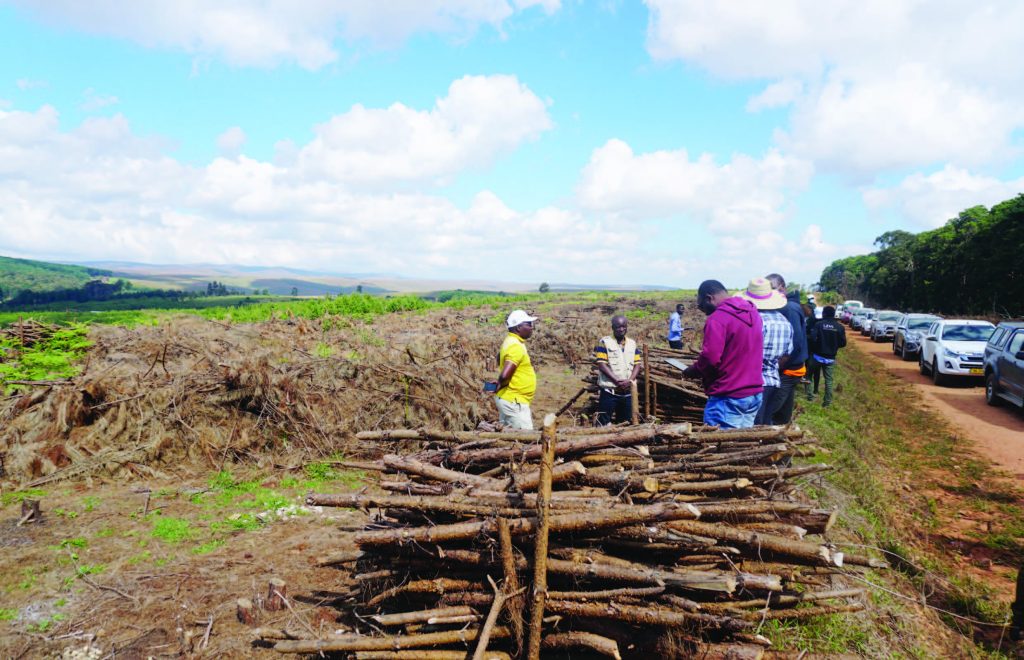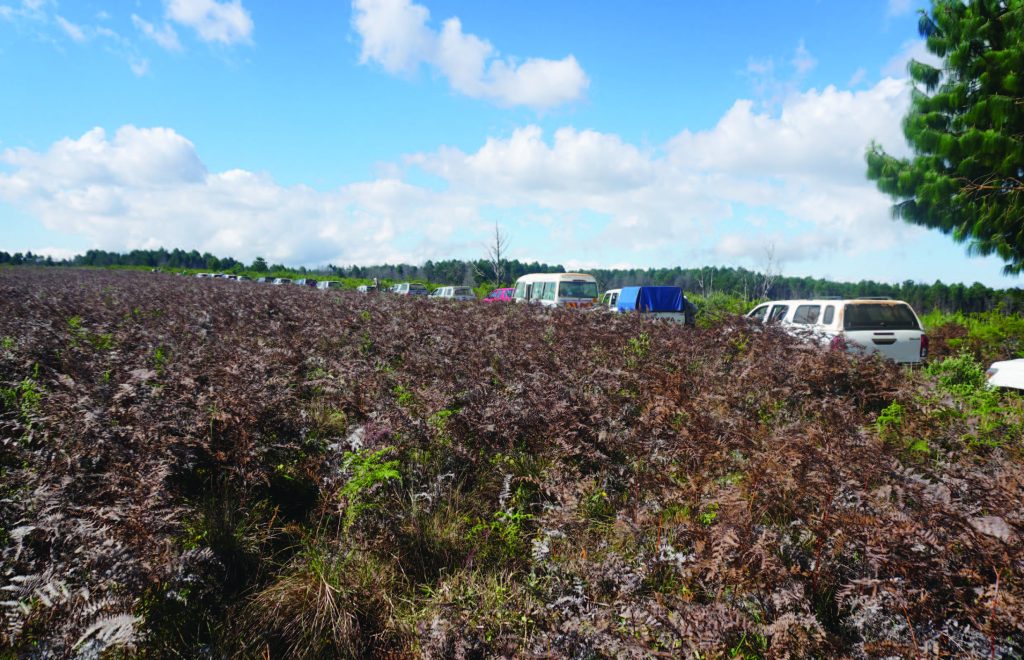Invasive species turn thorny to biodiversity
Poaching has always been considered a major challenge to wildlife conservation in Malawi. Nyika National Park, first protected area covering 3 134 square kilometers (km) is no exception. However, the park is obscured from many outdoor lovers due to its terrain and the rugged access road is facing another daunting challenge. This one is biological in nature, the invasion by invasive alien species (IAS). Our contributor CHARLES MKOKA recently travelled to Nyika National Park and writes.

Comfortably reached by 4×4 vehicles because of the dusty road, the full potential as an eco-tourism destination site is yet to be explored. The bumpy and rocky road also makes it difficult for subsistence farmers located in that north west corridor to get their agricultural produce to markets for better prices, including social amenities for the remotely located populations.
For the brave-hearted visitors willing to view the beautiful scenery up on Chelinda, they have to ride through a dusty road passing through Bolero, Luvili, Bembe, Mwazisi before reaching Thazima, the main entrance to the park. This is a distance of approximately 60 km to the gate and another 60 km to Chelinda.

Nyika Park ecology
Nyika’s National Park manager Anthony Makwemba says the spectacular plateau boasts of largest montane complex, blessed with abundant plant and animals’ species. There are 200 orchid species growing on the plateau.
The scenery is exhilarating, with the upper plateau covered by close to 100 000 hectares (ha) of gently rolling Loudetia–Andropogon grassland. At the peak of Nganda Hill 2 607 metre is a grassy hill.
Numerous impeded drainage channels support dambos, with small patches of short-canopy hagenia montane forest on the slopes.
According to Chikwemba, only the wet eastern escarpment is extensively forested, with some 3 400 ha montane rainforest. The montane rainforest reappears on the gentle south-western slopes where it is rather fragmented. The rest is dominated by Brachystegia (Miombo) woodland that ascends to 2 050 metres on drier and warmer western scarp.
“Miombo woodland is the dominant type of vegetation in the northern extension of the park (established in 1978)—an area of rugged terrain, broken hills and large faulted valleys. This makes the Nyika an important catchment area and contains the source of four large rivers which drain into Lake Malawi, including the North Rukuru, and one into the Luangwa river in Zambia,” explains Chikwemba in an interview.
Invasive species
In a 2018 study published in the Journal, Transactions of the Royal Society of South Africa, entitled, “An assessment of the distribution and potential ecological impacts of invasive alien plant species in eastern Africa,” researchers found that the distribution of widely established and potential transformer plant species is determined by a number of factors with climate being the dominant factor at the continental scale with topography, land use and cover being most important at the regional scale.
The wide range of ecosystems, ranging from deserts to forests, and climatic conditions found across eastern Africa makes the region particularly prone to invasions by many introduced plant species. Such invasions are being facilitated by increased land degradation, especially through over – grazing and deforestation, and also by climate change.
Another invasive to Nyika ecology is the black wattle. This is a plant that also replaces native species as it makes the habitat less suitable for other species to grow and, flourish in addition to reducing water quantity.
Marlene Chikuni, lecturer in Plant Botany at the University of Malawi points out that it is not easy to deal with IAS and usually control is a combination of several methods: physical, chemical and bio-control.
“Black wattle is a prolific seed producing plant, control has to target reproduction but also the seed bank in the soil,” she says.
Another expert that has studied invasive is Arne Witt of the Centre for Agriculture and Bioscience International (CABI).
Witt who is the coordinator of IAS programme, observes that the worst invasive alien plants in Malawi are, among others, Lantana camara, Opuntia stricta, Prosopis juliflora, Mimosa diplotricha, Hyptis suaveolens, Pinus patula, Rubus spp, and Pontederia crassipes.
Threats to biodiversity
Many of these alien plants were intentionally introduced in Malawi. In 1950s the Colonial Development Corporation established a plantation of 542ha of pines (Pinus patula and P. elliotii), Eucalyptus and Wattle (Acacia mearnsii) at Chelinda, and some smaller plantations elsewhere on the plateau.
They have subsequently escaped cultivation, invading grasslands and riparian zones at Nyika National Park, displacing native plant and animal species, and threatening precious water resources, so important for the development.
Environmental Affairs Department (EAD) principal environmental officer Mphatso Kalemba, who heads the IAS project says pines are a thirsty species that has the potential to reduce stream flows and as such water availability downstream. This, she says leads to negative consequences on the quantity available for agriculture, hydro-electric generation, irrigation and domestic supply.
“Pine also has a negative impact on biodiversity. They alter soil pH and texture making it less suitable for other plants and wildlife to flourish. This threatens the abundance of endemic species in the habitat. The resultant effect is that no other plant can grow,” explains Kalemba.
She added that fires in areas invaded by pines are also detrimental. Invasions increase the costs of fire management and are more prone to soil erosion, especially when burnt just prior to heavy rain.
Areas occupied by invasive alien species also reduce abundance of plant pollinators in an ecosystem. Farming communities adjacent to protected areas are dependent on bees and other pollinators. Displacement of native flowering plants by species such as pine also reduces pollinator population available for honey production.
Deadly threats
Invasive species displace native plants, and in some cases may drive them to extinction. As such they may pose a threat to crop wild relatives (CWR). These are wild plant species that are closely related to cultivated crops. In many cases these wild plant species are, “parents” of the crops we cultivate.
CWR are a source of novel genes for crop improvement. The fact that they are wild plants means that they often possess distinct characteristics such as drought tolerance, and pest and disease resistance; attributes that have been lost in our crops as a result of plant breeding for increased growth rates and higher yields.
Genetics specialist at Plant Genetic Resources Centre under the Department of Agriculture Research Services Nolipher Mponya says genes acquired from wild relatives are used to improve crop resilience, drought and disease attacks.
“Wild species have got both nutritional and pharmaceutical value for use. They also help to sustain the ecosystems thereby enhancing services to the populace,” Mponya explains, lauding the prevalence of diverse species in Nyika which must be protected from invasive species.
Mponya says there are a number of reasons why crop wild relatives need to be conserved. First, is to improve crop resilience to climate change and for crop diversification. With more resilient crops improving food and nutritional security including dietary diversification will be easier to accomplish.
Presence of these species will maintain the gene pool as a reserve resource. This will protect them from extinction as they are threatened by both invasive species, climate change and land use change as a result of expansion in agricultural production and land for settlement.





